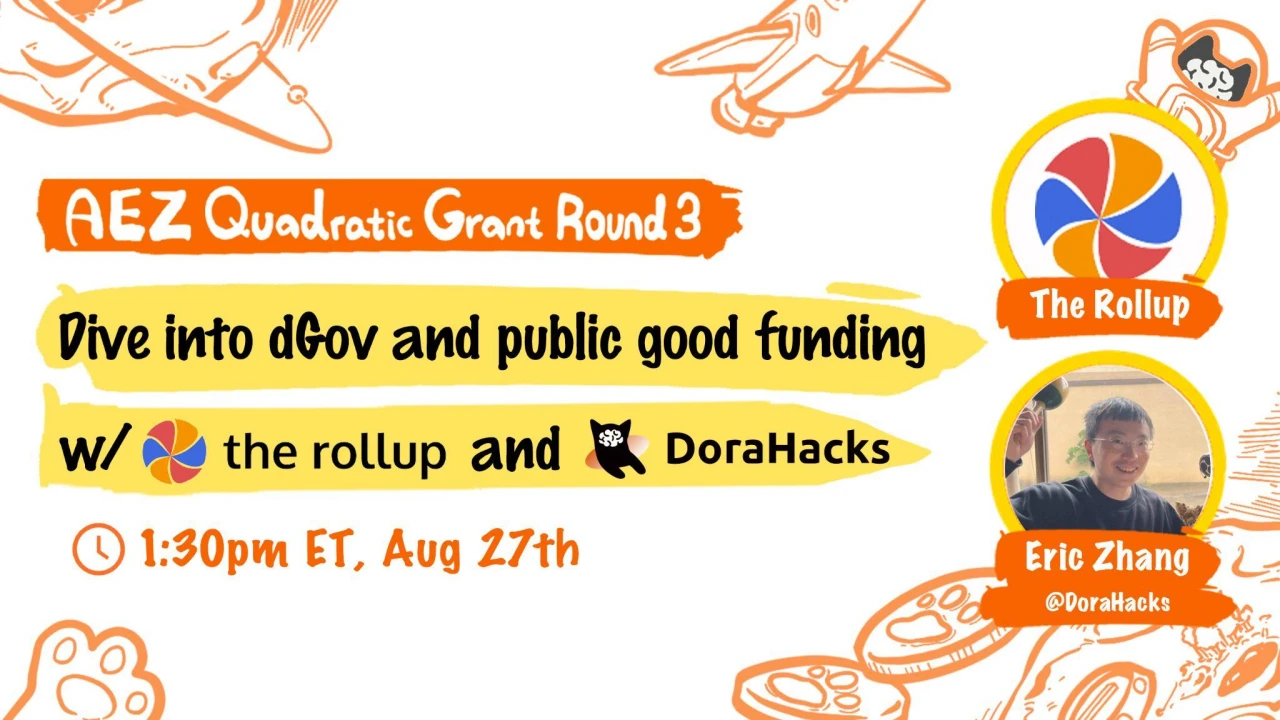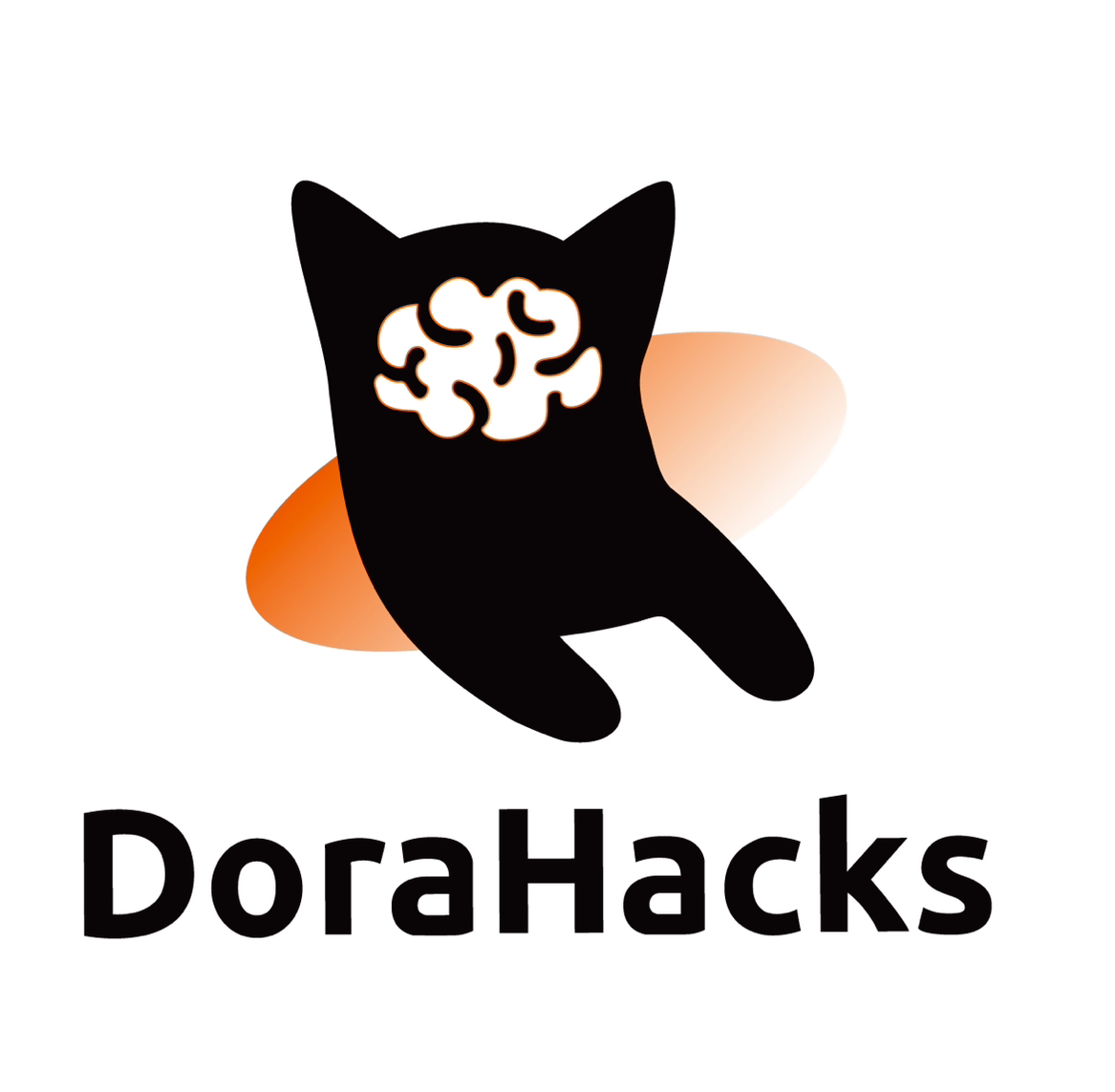
On August 27, Eric Zhang, founder of DoraHacks, spoke with Robbie from Web3 media The Rollup about decentralized governance and public product funding in the Cosmos ecosystem. DoraHacks previously launched an innovative grant program, the “ AEZ Quadratic Grant” , which uses a groundbreaking on-chain community voting and governance mechanism to provide important financial support for early public product projects in the Cosmos ecosystem.
The following are the highlights of the interview. The full interview can be viewed here: https://x.com/DoraHacks/status/1828485174419702161
DoraHacks, The Rollup, and Public Goods Funding
Eric first briefly introduced the history of DoraHacks. DoraHacks has been established for ten years, and its mission is to build a global community and hackathon platform focused on empowering open source developers to motivate them to independently design and build new products. Today, the DoraHacks.io platform has integrated various mechanisms related to decentralized governance, allowing the decentralized community to directly participate in the selection of important projects and the allocation process of the funding pool.
As a staunch supporter of Cosmos, DoraHacks is committed to developing underlying tools and infrastructure to achieve democratic and fair community governance in the Cosmos ecosystem. On this basis, DoraHacks launched the ATOM Economic Zone (AEZ) quadratic funding program. This is an important initiative launched by DoraHacks to fund public goods in the Cosmos ecosystem, and it also highlights DoraHacks support for long-term projects and its commitment to the healthy development of the ecosystem. The AEZ funding program was initially funded by on-chain node revenue; later, with the passage of Cosmos Governance Proposal 917 , the Cosmos Hub and Atom Accelerator (AADAO) provided funds to support the continued operation of this program for 10 rounds.
The media platform The Rollup itself can be considered a public goods project: it provides educational content, aggregates the latest information, and helps users understand the key concepts of the Cosmos ecosystem and the entire Web3 industry. This also makes The Rollup eligible as one of the funded projects (Grantee) and has entered the AEZ quadratic funding program from the beginning. From this perspective, The Rollup also fully agrees with the concept that community support itself is an integral part of open source project development.
Innovative exploration of community governance: quadratic funding and MACI voting
The conversation delved into the details of Quadratic Funding (QF) and Minimal Anti-Collusion Infrastructure (MACI), which are at the core of the community governance tools developed by DoraHacks. These mechanisms promote the fairness and privacy of voting, guaranteeing direct participation of the community in key decision-making processes, mitigating the influence of large stakeholders (whales), and ensuring democratic allocation of resources.
What is Quadratic Funding?
As a form of community voting in the AEZ funding program, QF allows all community members to use ATOM to vote for recipients. The QF algorithm is designed to mitigate the excessive influence of whales, while combining anti-sybil attack checks to achieve a fairer distribution of funds in terms of results; the ATOM used for voting will also flow directly to the corresponding team as financial support for the recipients. Robbie pointed out that, taking taxation as an example, when donating to a fund pool in the real world, people often cannot choose where the funds go, which clearly lacks participation in democratic decision-making.
The key concept behind QF is quadratic voting (QV), where voters do not have to choose a single option, but can weigh the number of votes and costs to express their preferences more comprehensively, which naturally leads to more diverse choices. Eric believes that this voting method has great potential to be applied in various situations in real society.
What does MACI voting mean?
Eric explained that MACI was originally conceived in a blog post in the Ethereum community as a simple anti-collusion infrastructure. Applying it to voting is just one use case that DoraHacks developed and used as an alternative to QF in AEZ. In MACI applications, an administrator (operator) is always required, and the administrators public key is used to encrypt on-chain messages (in this case, on-chain voting information), that is, before the voting ends, neither the voter nor the voted person can estimate the result based on the on-chain information. After the MACI vote ends, the administrator counts the voting information and publishes it together with the zero-knowledge proof, thereby proving that the voting results are true and accurate while hiding the identities of all voters.
In the context of voting to determine funding allocation, voter anonymity is critical to preventing collusion - not only is the identity of the voter private, they cannot prove to third parties how they voted. MACIs ease of use in the AEZ funding program is also one of the highlights: DoraHacks has completed the MACI voting system and the AEZ ecosystem by whitelisting the addresses of 1 million ATOM stakers, so that all members of the ecosystem community can participate in the voting. In the last 2 rounds of voting, the actual number of voters who participated reached thousands.
This extremely user-friendly form of direct democracy clearly appealed to Robbie, who commented that such a completely community-centric governance model is the true use case for DAOs. In addition, by using the revenue of on-chain nodes to directly fund public goods projects in the Cosmos ecosystem, DoraHacks has established a public goods funding model with a positive positive feedback loop, which is a sustainable and long-term funding program.
What to look forward to next: aMACI and beyond
While much of this conversation has focused on public goods funding, future applications of the tools and infrastructure DoraHacks is developing may be very different.
Eric said that decentralized governance is essential for all decentralized communities, and more efficient governance will lead to more efficient community development. The MACI voting framework itself can be used by anyone and can currently be created through the Dora Vota network - Dora Vota is a Cosmos application chain developed by Dora Factory specifically for governance.
Eric went on to mention a flaw in MACI, which is that the identities of the participants are not hidden from the operator itself. If the operator is corrupt, the entire project will collapse. This is why the Dora Factory team is developing an anonymous MACI (aMACI) governance product. In an aMACI voting round, users can register new keys to hide their identities from the operator, making the process truly fully anonymous while maintaining integrity through zero-knowledge proofs. This infrastructure will soon be deployed on Dora Vota and available to various networks in the Cosmos ecosystem in the near future.
This progress is particularly exciting because it brings a truly trustless and truly decentralized protocol, which Eric believes is something that few teams in the entire Web3 space can achieve. DoraHacks hopes that with the launch of the aMACI governance product, it will open the door to other use cases in decentralized governance as well as new token economics, new products, and new functional network states.










